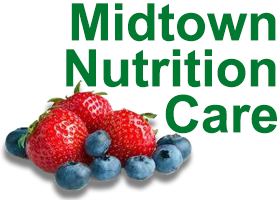WHAT IS FIBER
Fiber is the part of a plant or grain that our body does not absorb when we eat the entire plant or grain. Fiber passes through the body undigested, and exits in our stool. Fiber is part of the carbohydrate (starch) food group. An easy way to tell the difference between starchy foods that contain fiber from those that don’t is that high fiber foods are often brown in color, while low fiber foods are often white in color.
SOME OF THE MANY BENEFITS OF FIBER
Bowel regularity: Fiber adds bulk to the stool which helps to improve bowel regularity and overall bowel health.
Lowers cholesterol: Fiber helps rid the body of undesirable cholesterol. Fiber, especially soluble fiber, binds to cholesterol particles, much like a sponge, and removes them from the body.
Weight loss: High fiber foods often take longer to eat, and also helps us feel full longer between meals. This can help us eat less throughout the day, which aids in weight control.
Improved blood sugar levels: Because fiber takes longer to digest than other carbohydrates, high fiber foods don’t raise blood sugar levels as much as starchy foods that don’t contain fiber.
TYPES OF FIBER AND RECOMMENDED DAILY AMOUNTS
There are two types of fiber. Soluble fiber can be found in oatmeal, nuts and legumes, as well as most fruits and vegetables. Insoluble fiber can be found in the seeds and skins of fruits and vegetables, as well as whole grain foods and brown rice. Soluble fiber mostly helps lower cholesterol and improves blood sugar control, while insoluble fiber mostly helps with bowel regularity.
The recommended daily fiber intake differs by gender and age. The goal for men under 50 is 38 grams per day, while the goal for women under 50 is 25 grams per day. Goals for men and women over 50 are 30 grams for men and 21 grams for women.
AMOUNTS IN COMMONLY CONSUMED FOODS
Brown rice (1 cup cooked) – 2 grams
Broccoli (1 cup, raw) – 3 grams
Oatmeal (1 cup, cooked) – 4 grams
Baked potato (with skin) – 4 grams
Apple (large, with skin) – 4 grams
Beans and legumes (1/2 cup, cooked) – 8 grams
Fiber One cereal (1/2 cup dry) – 14 grams
EASY WAYS TO ADD MORE FIBER
– Switch to 100% whole grain bread when making sandwiches
– Use 100% whole grain cereal and crackers instead of refined cereal and crackers
– Use fruit and vegetables as snacks instead of chips or other processed foods
– Add a salad or vegetable as a side dish to your lunch or dinner meal
– Switch to brown rice and whole grain pasta instead of white varieties
